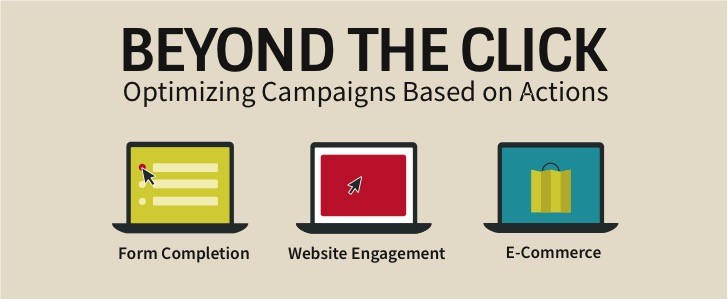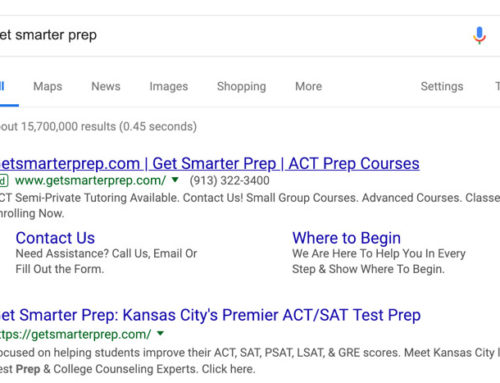Business owners, when you aren’t satisfied that your display campaign is for branding, or when CTR isn’t enough evidence that the campaign is working, optimizing to a separate action can often lead to a more satisfaction with results.
I’m talking to you savvy clients. You know who you are. You spend a lot of time analyzing reports and data, looking for signals of a positive ROI. You aren’t always happy with general results like increased store traffic and an overall increase in sales. You are often unwilling to accept that a display campaign was the catalyst, often claiming that other marketing, word of mouth, or your own awesomeness is the reason for your success.
If I have just described you, it may be time to move beyond branding and CTR. Here are four “beyond the click” metrics that can be measured and optimized.
Multi-Page Engagers
With the right tag in place, one can measure if the traffic coming from a display campaign is visiting pages deep within the site (like product pages). While still not evidence of a sale made or positive ROI, this kind of multi-page engagement is a clear indicator that the traffic coming from the campaign is interested in what you offer.
Form Completions
If you have a history of success with a form on your site, optimizing the campaign to this tactic can be very valuable. As we start to see which campaign elements (keywords, websites, time of day, etc.) drive visitors to complete the form, we can pivot the campaign in a direction that should result in more of this kind of behavior.
E-Commerce
Like form completions, we would only want to target online sales if you have already proven a case for e-commerce success. If that’s the case, we can tag the shopping cart “thank you” page and then drive the campaign to deliver to users who look like those who are completing an online purchase.
Geo-conversions (aka Store Visits)
If you are using geo-fencing as a tactic, you’re probably a fan of seeing how many people who were delivered an ad showed up in your conversion zone (your store). With time and data we can start seeing which apps aren’t delivering geo-conversions and then cut them, freeing up more impressions for those that are. The same is true of target zones that aren’t resulting in visits. Also, if you notice a trend in target zones that work better than others, this can create an opportunity to come up with additional target zones that look like the ones that are working.
Learning From Conversions
Conversion tracking can also be used to learn about a user’s behavior and what they are or aren’t doing when they get to your website. For instance, are they visiting the website and then bailing after the 1st step, or the 2nd? Are they making it all the way through to the form page and then exiting the page? This is a good way to optimize large campaigns that have multi-step forms like applications, or to see how far your prospects are willing to go to make a purchase.
Some Considerations
For action-based campaigns to work, you’ll need a lot of actions to take place so that you can optimize the campaign to win more of them. That means you’ll need a lot of impressions and enough time to make optimizations accordingly. For multi-page viewer and geo-conversions, a minimum of 100K monthly impressions is recommended. Form completion and e-commerce campaigns should have no fewer than 300K monthly impressions, and 500K+ would be better. You should also commit to a minimum of 3 to 6 months to gather data and make optimizations.
Actions Aren’t For Everyone
If your display campaign’s main goal is branding and all that goes along with that (an overall increase in business), then it may not be a good idea to start tracking or optimizing to specific goals. Unlike paid search, display wasn’t built to be a direct response medium. When you understand that, it’s easier to accept that measuring display is a lot like measuring traditional media. Action campaigns may generate more questions than they provide solutions.
Should you go down this path you will need two things. One, the budget to run a campaign that gathers enough data to make optimizations, and two, the patience to experiment with the right levers and knobs until the campaign is producing great results. In other words, optimization takes money and time.
Google Analytics
For the record, Google Analytics has a history of improperly measuring display traffic, especially mobile display. Acquired from Urchin Software Corp. in 2005, it simply wasn’t built with display or mobile in mind. While ideal for paid search, Google Analytics “speaks a different language” (JavaScript) than display and mobile. If you are using Google Analytics, additional education regarding how a display campaign’s universal tag can track view-through visits, multi-page engagers, form completions and e-commerce, and how the reporting will not match what you see in Google Analytics is needed.
Things That Can’t Be Measured With a Tag
Phone calls and in-person purchases are often considered conversions. Of course, a tag can’t track this kind of action, but there are call-tracking companies that can provide unique phone numbers that track and even record phone calls. As for in-person sales, a lot of advertisers ask “How did you hear about us?” But if you are under the impression that clients are going to answer honestly, well… imagine an example… “I was researching lawn and garden products when I saw your display ad a few times. I searched for you by name and made my way to your website after finding you on Google. I got distracted by my cat and forgot about you. It sure is a good thing you used site-retargeting, because that reminded me to drive here and buy this cute cherub bird bath.”
While it would be nice to know how every piece of advertising influenced a purchase and the path the customer took to get there, it’s simply not realistic for us to think this can be measured accurately.
Pursuing “Beyond the Click” Metrics
Before implementing an action-based campaign, talk to your internet marketing team or conduct further research. Tracking conversions can be a valuable way to measure the success of a display campaign, but as you can tell, the stars will need to align just right for the tracking and conversions to work properly.





